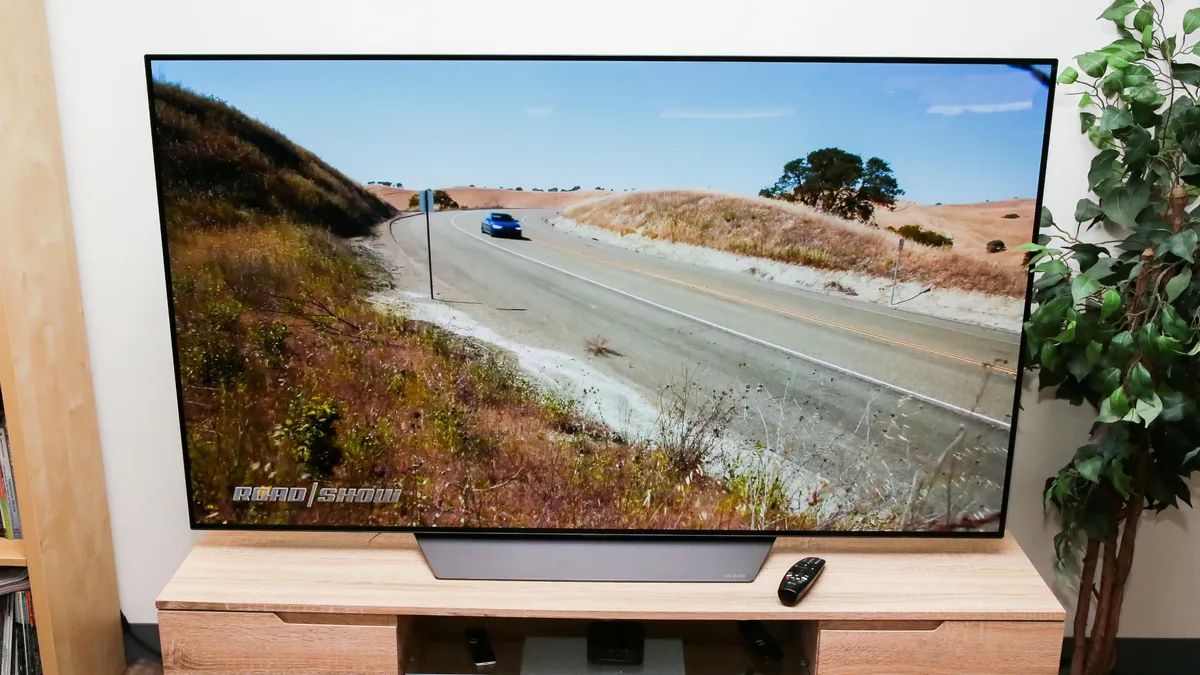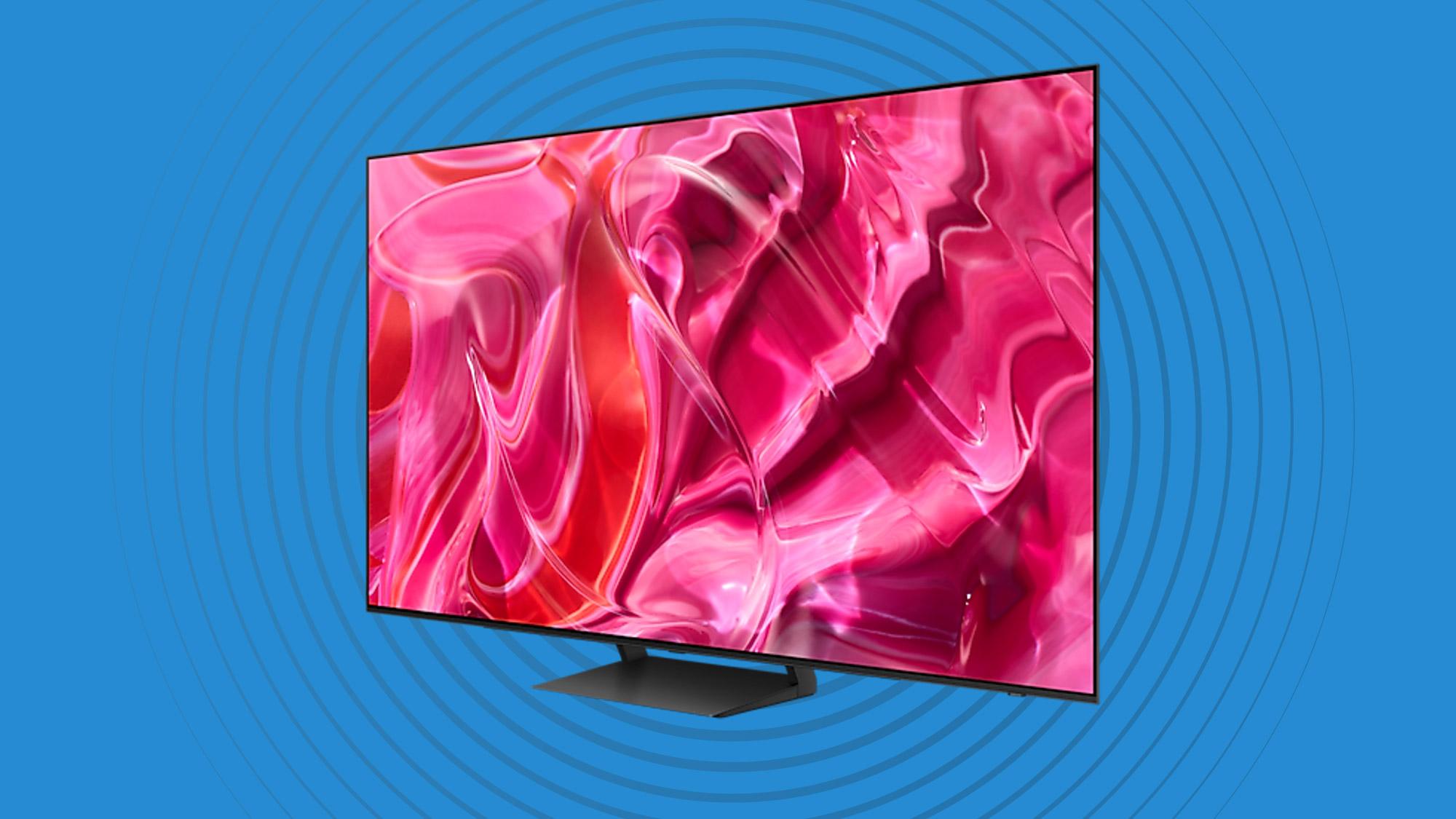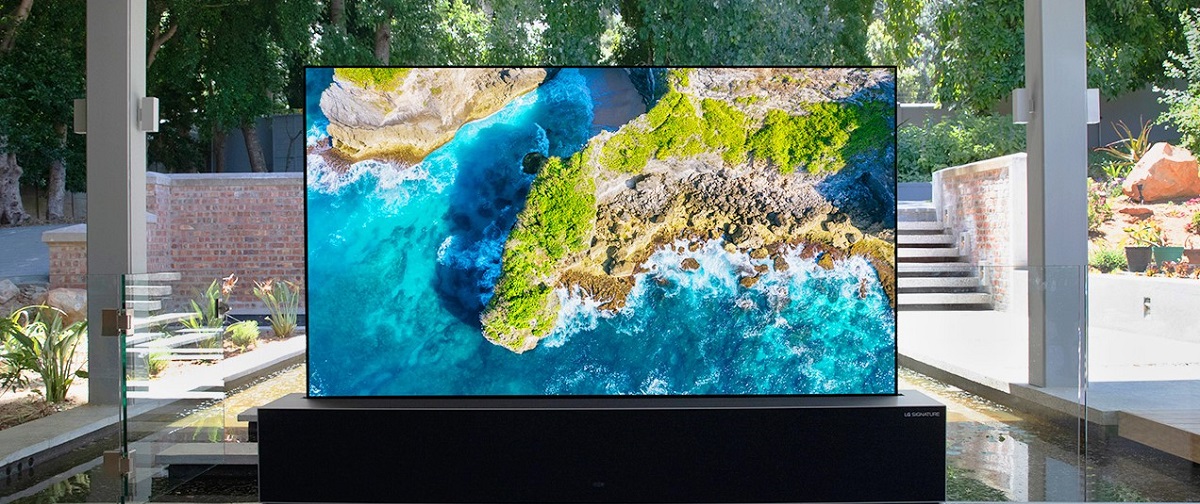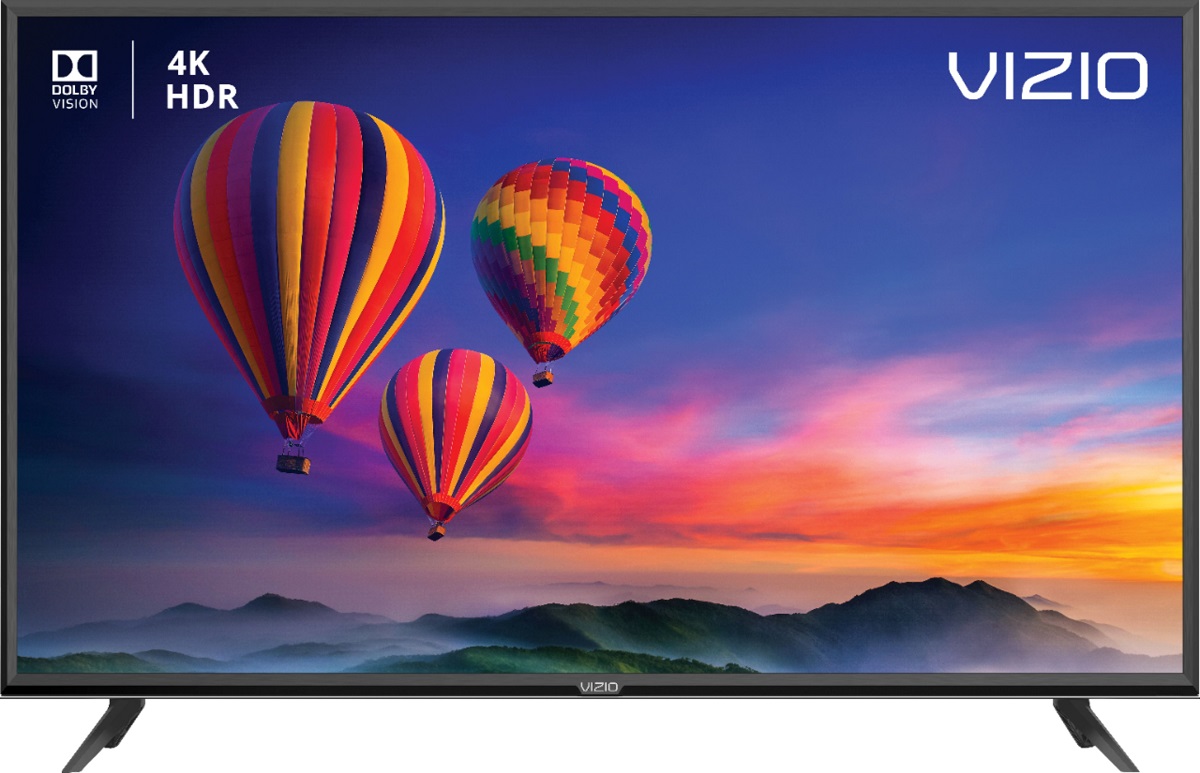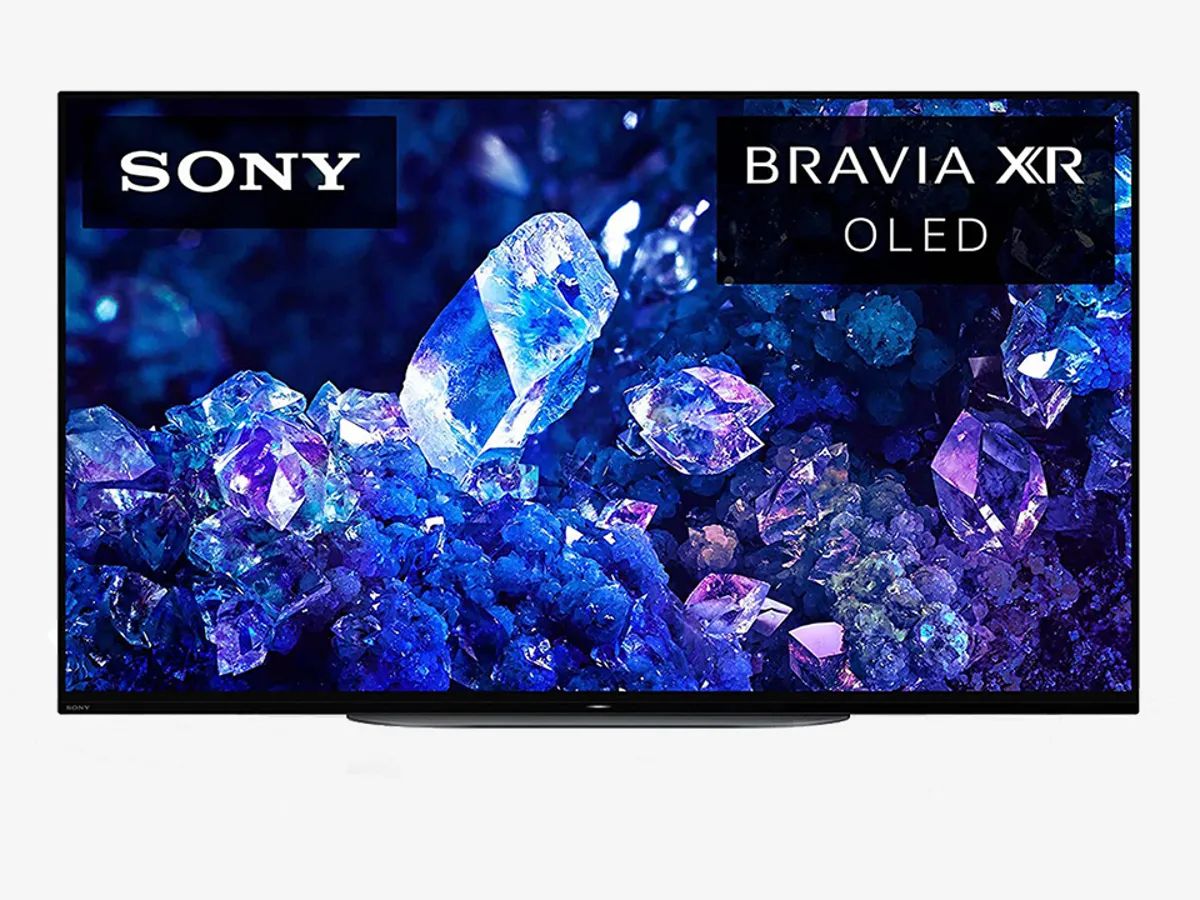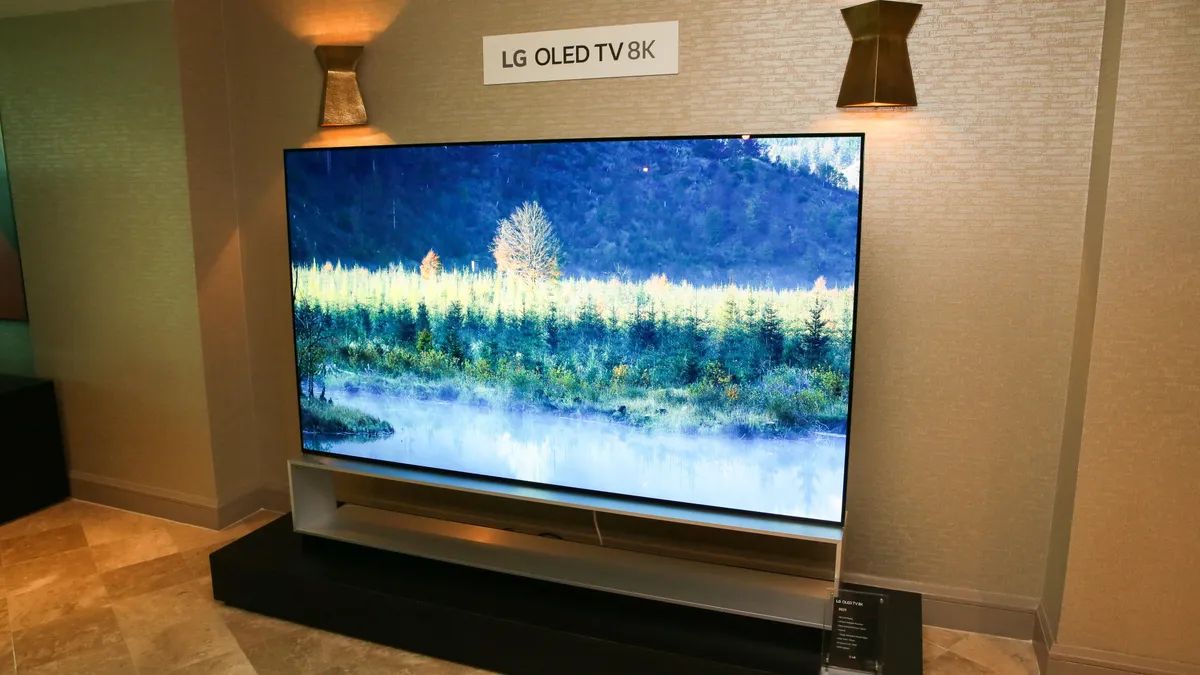What is an OLED TV?
An OLED TV, or Organic Light-Emitting Diode TV, is a type of display technology that offers exceptional visual quality and brings images to life. Unlike traditional LED or LCD TVs that rely on a backlight source, OLED TVs use organic compounds that emit light when an electric current is applied.
The main advantage of OLED technology is that each pixel in the display can be individually controlled, allowing for perfect blacks, infinite contrast ratios, and vibrant colors. This means that when a pixel is turned off, it produces true black since it does not emit any light. As a result, OLED TVs deliver deeper levels of black, making other colors appear more vivid and lifelike.
In addition to superior black levels, OLED TVs also offer wide viewing angles, meaning that the picture quality remains consistent no matter where you’re sitting in the room. This is a significant advantage over LCD TVs, which can suffer from color shifting and loss of picture quality when viewed from off-center angles.
Another benefit of OLED technology is its ultra-fast response times. This ensures that fast-paced action sequences and sports games are displayed smoothly, with minimal motion blur or ghosting. This makes watching sports and playing video games on an OLED TV a truly immersive experience.
Furthermore, OLED TVs are incredibly thin and lightweight compared to other display technologies. This slim profile allows for sleek and modern designs, making them a perfect fit for any living space. Additionally, OLED TVs offer flexibility in terms of placement options, whether you prefer wall-mounting, tabletop placement, or creative installation choices.
It’s important to note that OLED technology is constantly evolving. Manufacturers are always striving to enhance the technology’s capabilities, such as improving brightness levels, minimizing burn-in risks, and increasing screen lifespan.
In summary, an OLED TV is a cutting-edge display technology that offers exceptional picture quality, vibrant colors, wide viewing angles, fast response times, and a slim design. If you’re looking for the ultimate visual experience in your home entertainment system, an OLED TV is definitely worth considering.
The Advantages of OLED Technology
OLED technology offers numerous advantages that set it apart from other display technologies. Let’s explore some of the key benefits of OLED TVs:
1. Perfect Blacks and Infinite Contrast Ratios: One of the most significant advantages of OLED technology is its ability to produce perfect blacks. Since each pixel can be individually turned off, OLED TVs can achieve true black levels, resulting in an infinite contrast ratio. This enhances the overall picture quality and makes images appear more vibrant and lifelike.
2. Vibrant and Accurate Colors: OLED displays are known for their exceptional color reproduction. With the capability to individually control each pixel’s brightness and color, OLED TVs can showcase a wide range of colors with incredible accuracy and richness. Whether you’re watching movies, playing games, or viewing photographs, you’ll enjoy a visually stunning and immersive experience.
3. Wide Viewing Angles: Unlike LCD TVs, which may suffer from color distortion and loss of picture quality when viewed off-center, OLED TVs offer wide viewing angles. This means that you can enjoy consistent and accurate colors, contrast, and brightness, no matter where you’re sitting in the room. Everyone can have an optimal viewing experience, whether they’re sitting directly in front or off to the side.
4. Fast Response Times: OLED technology provides ultra-fast response times, ensuring that fast-moving scenes and action sequences appear smooth and clear. Whether you’re watching a thrilling sports event or playing a high-speed video game, you’ll enjoy an immersive and blur-free visual experience.
5. Slim and Lightweight Design: OLED TVs are incredibly slim and lightweight compared to other display technologies. This makes them easier to mount on a wall, place on a stand, or integrate into your home decor. The thin profile and minimal bezels create a sleek and modern aesthetic that adds elegance to any living space.
6. Energy Efficiency: OLED technology is known for its energy efficiency. Since each pixel individually produces light, there is no need for a backlight, resulting in lower power consumption. This not only reduces energy costs but also contributes to a greener and more sustainable environment.
7. Flexible Placement Options: OLED TVs offer flexibility in terms of placement options. Whether you want to mount it on a wall, place it on a stand, or even have a creative installation, the slim and lightweight design makes it easier to adapt to your preferred setup.
In summary, OLED technology provides several advantages, including perfect blacks, vibrant colors, wide viewing angles, fast response times, a slim and lightweight design, energy efficiency, and flexible placement options. These features combine to deliver an exceptional visual experience that is unrivaled by other display technologies.
Important Features to Consider
When shopping for an OLED TV, it’s important to consider various features to ensure you make an informed decision. Here are some key factors to keep in mind:
1. Screen Size and Resolution: Determine the ideal screen size for your viewing space. OLED TVs are available in a range of sizes, from compact models to larger screens exceeding 70 inches. Consider the viewing distance and room layout to choose an appropriate size. Additionally, consider the resolution options available, such as Full HD (1080p) or 4K Ultra HD (2160p), depending on your preferences and budget.
2. HDR Capability: High Dynamic Range (HDR) technology enhances the contrast and color accuracy of the display, resulting in more realistic and vibrant images. Look for an OLED TV that supports HDR formats such as Dolby Vision, HDR10, or HLG (Hybrid Log-Gamma) for a superior viewing experience.
3. Smart TV Functionality: Many OLED TVs offer smart TV capabilities, allowing you to access streaming services, apps, and other online content directly from your television. Consider the operating system and the range of available apps to ensure compatibility with your preferred streaming services and entertainment needs.
4. Refresh Rate and Gaming Features: If you’re an avid gamer or enjoy watching fast-paced sports, consider the refresh rate and gaming features of the OLED TV. Look for models with a high refresh rate (120Hz or higher) to minimize motion blur and ensure smooth gameplay. Additionally, features like variable refresh rate (VRR) and auto low latency mode (ALLM) can enhance gaming performance.
5. Connectivity Options: Consider the available ports and connectivity options on the OLED TV. Look for HDMI ports to connect gaming consoles, Blu-ray players, and other devices. USB ports, Ethernet ports, and built-in Wi-Fi are also important for connecting external devices and accessing online content.
6. Sound Quality: While most televisions come with built-in speakers, the audio quality may not always meet your expectations. If audio is important to you, consider an OLED TV that offers good built-in speakers or plan to invest in a separate sound system or soundbar for an immersive audio experience.
7. Design and Aesthetics: The design and aesthetics of the television can enhance your overall viewing experience. Consider factors such as bezel size, stand design, and overall build quality to ensure that the OLED TV complements your home decor and personal style.
8. Price and Value for Money: OLED TVs tend to be more expensive than other display technologies, so it’s essential to determine your budget and find the best value for your money. Consider the features, picture quality, brand reputation, and customer reviews to ensure that the price aligns with the overall quality and performance of the TV.
By carefully considering these important features, you can select an OLED TV that meets your specific requirements and provides an optimal viewing experience.
Understanding Panel Size and Resolution
Choosing the right panel size and resolution is crucial when selecting an OLED TV. Here’s what you need to know to make an informed decision:
Panel Size: The panel size refers to the physical dimensions of the TV display. OLED TVs come in a wide range of sizes, from smaller models around 55 inches to larger screens exceeding 77 inches. Consider your viewing distance and the layout of your room to determine the ideal panel size. If you’re sitting closer to the TV, a smaller size may be sufficient, while larger rooms can accommodate bigger panels for a more immersive experience.
Resolution: The resolution refers to the number of pixels the TV display has, which directly impacts the sharpness and clarity of the images. The two main resolution options for OLED TVs are Full HD (1080p) and 4K Ultra HD (2160p).
Full HD (1080p): Full HD resolution offers excellent picture quality and is a suitable choice for smaller screen sizes (around 55 inches or less) or if you primarily watch standard HD content such as cable TV channels or Blu-ray discs. While it may lack the sheer detail and sharpness of 4K Ultra HD, it still delivers a visually pleasing experience.
4K Ultra HD (2160p): 4K Ultra HD resolution provides 4 times the number of pixels compared to Full HD, resulting in incredibly detailed and lifelike images. It’s ideal for larger screen sizes and offers the best visual experience when watching native 4K content, such as 4K Blu-ray discs or streaming services that offer 4K content. Even when viewing non-4K content, many OLED TVs equipped with advanced upscaling technology can enhance the visual quality by converting the lower-resolution content to near-4K quality.
It’s important to note that the availability of 8K resolution OLED TVs is also emerging. With twice the number of pixels as 4K Ultra HD, 8K resolution offers an unprecedented level of detail and sharpness. However, it’s essential to consider your content availability and viewing distance, as well as the significantly higher price tag associated with 8K TVs.
In summary, when considering panel size, take into account the viewing distance and room layout to determine the appropriate size. For resolution, Full HD is a solid choice for smaller screens and regular HD content, while 4K Ultra HD delivers superior detail and is ideal for larger screens and native 4K content. Keep in mind that 8K resolution is an emerging option but may not be necessary for most consumers at this time.
Comparing OLED TV Brands
When shopping for an OLED TV, it’s important to consider the different brands available and compare their offerings. Here’s a comparison of some popular OLED TV brands to help you make an informed decision:
1. LG OLED TVs: LG is a pioneer in OLED technology, and their OLED TVs are highly regarded for their exceptional picture quality and performance. LG offers a wide range of OLED models with various screen sizes and features, including compatibility with popular HDR formats, advanced gaming features, and smart TV functionality. LG OLED TVs are known for their wide viewing angles, deep blacks, vibrant colors, and user-friendly interfaces.
2. Sony OLED TVs: Sony is well-known for its expertise in display technology, and their OLED TVs are no exception. Sony OLED TVs excel in image processing and offer impressive picture quality with accurate colors and great clarity. They also feature powerful upscaling capabilities to enhance non-4K content. Sony OLED TVs often boast sleek designs, immersive sound systems, and advanced features like Acoustic Surface technology that uses the screen itself as a speaker.
3. Panasonic OLED TVs: Panasonic is another reputable brand that produces high-quality OLED TVs. Panasonic OLED models offer excellent color accuracy, deep blacks, and wide viewing angles. They often come equipped with advanced image processing technologies and support multiple HDR formats. Panasonic OLED TVs also focus on delivering exceptional sound quality through their built-in speaker systems.
4. Philips OLED TVs: Philips offers OLED TVs with their signature Ambilight technology, which projects ambient lighting onto the wall behind the TV to enhance the viewing experience. Philips OLED models feature impressive picture quality, vibrant colors, and good motion handling. They also come with smart TV functionality and support for popular HDR formats.
5. Other Brands: Apart from the major players mentioned above, other brands like Hisense, TCL, and Vizio also offer OLED TVs at more affordable price points. While they may not have the same level of brand recognition or extensive features as the leading brands, they can still provide a satisfactory OLED TV experience with impressive picture quality, solid performance, and competitive pricing.
When comparing OLED TV brands, consider factors like picture quality, features, design, reputation, customer reviews, and overall value for money. It’s also beneficial to visit showrooms or read professional and consumer reviews to get a hands-on experience and gather opinions from real users.
In summary, LG, Sony, Panasonic, and Philips are well-known brands that offer exceptional OLED TVs with various features and capabilities. However, there are other brands in the market offering OLED options at more affordable price points. Consider your specific requirements and budget to find the brand that best aligns with your needs and preferences.
Shopping for an OLED TV: Where to Start
When it comes to shopping for an OLED TV, it’s essential to know where to start your search. Here are some key steps to help you kickstart your OLED TV shopping journey:
1. Research Online: Start by conducting thorough research online. Visit the websites of reputable electronics retailers and manufacturers to explore the range of OLED TV models they offer. Read product descriptions, specifications, and customer reviews to get an idea of the available options and their performance.
2. Set Your Budget: Determine your budget for an OLED TV. While OLED TVs tend to be more expensive compared to other display technologies, prices can vary depending on the brand, screen size, and features. Setting a budget will help narrow down your options and prevent overspending.
3. Compare Prices and Deals: Look for the best deals and discounts available. Compare prices from different retailers and consider any promotions or bundle packages that may be available. It’s also worth keeping an eye out for seasonal sales events like Black Friday or Cyber Monday, where you may find significant savings.
4. Read Expert Reviews: Seek out expert reviews from reputable technology websites. These reviews often provide detailed insights into the picture quality, features, and overall performance of OLED TVs. They can help you gain a better understanding of the pros and cons of different models and narrow down your choices.
5. Consider Showroom Visits: If possible, visit local electronics stores or showrooms to see OLED TVs in person. This allows you to experience the picture quality, view the screen from different angles, and assess factors like design, build quality, and user interface. It’s a great opportunity to ask questions and seek recommendations from knowledgeable staff.
6. Check Warranty and Return Policies: Before making a purchase, review the warranty and return policies offered by the retailer or manufacturer. This ensures that you have recourse in case of any defects or issues with your OLED TV. Look for warranties that cover a reasonable period and check if there are any additional warranty options available.
7. Consider After-Sales Support: Take into account the after-sales support provided by the brand or retailer. Look for brands known for their reliable customer service and technical support. This can make a significant difference in case you encounter any technical difficulties or need assistance in the future.
8. Make the Purchase: Once you have gathered all the necessary information, compared prices, and made a decision, it’s time to make the purchase. Ensure that you have considered delivery and installation options, and double-check the payment and shipping details before finalizing your order.
By following these steps, you can start your OLED TV shopping journey confidently and find the perfect TV that meets your needs and preferences within your budget.
Determining Your Budget
When shopping for an OLED TV, determining your budget is a crucial step in the decision-making process. Here are some factors to consider when setting your budget:
1. Price Range of OLED TVs: OLED TVs generally tend to be more expensive compared to other display technologies such as LED or LCD. The price of an OLED TV can vary depending on factors such as brand reputation, screen size, resolution, HDR capabilities, and additional features. Research and gather information about the price range of OLED TVs to get an idea of what you can expect to pay.
2. Screen Size Considerations: The size of the OLED TV can impact the price. Generally, larger screen sizes come with a higher price tag. Consider the size that fits your viewing area and personal preferences, while keeping in mind the cost implications.
3. Desired Features: Determine the features that are important to you. Different OLED models come with various features such as HDR compatibility, smart TV functionality, gaming features, advanced image processing technologies, and audio enhancements. Consider which features are essential to your viewing experience and prioritize them accordingly.
4. Future-Proofing: It’s worth considering the longevity of your investment and any potential technological advancements. While it is impossible to future-proof completely, choosing a higher-priced OLED TV with the latest features and future-proofing capabilities might provide a longer-lasting TV experience.
5. Value for Money: Assess the value that the OLED TV provides in relation to its price. Consider factors such as picture quality, brand reputation, user reviews, and the overall performance of the TV. Remember, it’s not just about the price alone, but the value you receive in return for the investment.
6. Financing Options: If your budget is limited, explore financing options that may be available. Some retailers offer installment plans or financing options that allow you to spread out the payment over a period of time. Consider the terms and conditions, including interest rates and any additional fees, before opting for financing.
7. Additional Costs: Keep in mind any additional costs that may be associated with buying an OLED TV. This includes potential expenses for wall mounting, cables, sound systems, or any other accessories required to enhance your viewing experience. It’s important to factor in these additional costs when determining your overall budget.
Overall, determining your budget for an OLED TV involves considering the price range of OLED TVs, the desired features, future-proofing considerations, value for money, financing options, and any additional costs. By carefully assessing these factors, you can establish a budget that aligns with your needs and preferences while ensuring you make an informed purchasing decision.
Reading Online Reviews and Consumer Reports
When shopping for an OLED TV, reading online reviews and consumer reports is a valuable step to gather insights and make an informed decision. Here’s why it’s essential and how to navigate through the vast amount of information available:
1. Reliable Information: Online reviews and consumer reports provide firsthand experiences and opinions from people who have purchased and used the OLED TV you’re considering. They can offer valuable insights into the performance, picture quality, features, and overall satisfaction of the TV. This information can help you make a more informed choice rather than relying solely on marketing claims.
2. Unbiased Opinions: Reviews and consumer reports typically provide unbiased opinions as they are based on personal experiences. Look for reviews from trusted sources, including reputable technology websites, well-known tech enthusiasts or influencers, and verified customer reviews on e-commerce platforms. These sources can provide reliable, independent, and objective views on the OLED TVs you’re interested in.
3. Consider the Consensus: Pay attention to the general consensus among reviewers. Look for patterns and commonalities in their feedback and observations. If multiple reviews highlight similar positive or negative aspects of a particular OLED TV, it can give you a better understanding of its strengths and weaknesses.
4. Gauge Your Priorities: Reviews and consumer reports can help you identify features and aspects that are important to you. Different reviewers may prioritize different factors, such as picture quality, gaming performance, user interface, or design. By reading a variety of opinions, you can determine which aspects align with your preferences and make a more tailored decision.
5. Read Both Expert and User Reviews: Consider reading a combination of expert reviews and user reviews. Expert reviews provide technical insights, in-depth analysis, and comparisons with other models, while user reviews offer real-life experiences and opinions. This balanced approach helps provide a comprehensive view of the OLED TV you’re interested in.
6. Look for Consistency: Look for consistent feedback across various reviews. Pay attention to any recurring positive or negative comments about a particular OLED TV. Consistency in feedback is an indicator of the TV’s performance and can help you decide if it meets your expectations.
7. Be Mindful of Biases: Keep in mind that reviews are subjective and can be influenced by personal preferences or biases. Be cautious of extreme opinions or overly positive/negative reviews. Aim for a balanced view by considering a range of reviews and sources.
By reading online reviews and consumer reports, you can gain valuable insights and make a more informed decision regarding the OLED TV you’re considering. It allows you to gauge the quality, features, and overall satisfaction from real users and experts in the field, helping you select an OLED TV that aligns with your preferences and requirements.
Take a Trip to the Store
While researching and reading reviews online is valuable, taking a trip to the store to see OLED TVs in person can provide a firsthand experience and help you make a more informed decision. Here’s why visiting a store is important and what to consider during your visit:
1. Visual Assessment: Seeing OLED TVs in person allows you to visually assess the picture quality, color accuracy, and overall display performance. You can compare different models side by side and evaluate their visual impact, brightness, contrast, and color representation. This firsthand experience can help you determine which OLED TV delivers the visual experience that suits your preferences.
2. Viewing Angles: OLED TVs are known for their wide viewing angles, but seeing it in person confirms this advantage. Walking around the store and viewing the OLED TVs from different angles helps you assess how well the picture quality holds up, even when you’re not sitting directly in front of the screen. Pay attention to any color shifting or loss of contrast as you move around the TV.
3. Interact with the User Interface: During your visit to the store, take the opportunity to interact with the OLED TVs’ user interfaces. Explore the menu settings, navigate through different apps, and test the TV’s responsiveness. This allows you to assess the user-friendliness and ease of use, helping you determine if the TV’s interface aligns with your preferences and needs.
4. Ask Questions to the Staff: The sales staff in the store can provide additional information and guidance. Don’t hesitate to ask questions about specific features, connectivity options, or any concerns you may have. They might also offer useful insights based on their expertise and knowledge of the OLED TVs available in the store.
5. Take Note of Design and Aesthetics: While functionality and performance are essential, the design and aesthetics of the OLED TV can also influence your decision. Pay attention to factors such as bezel size, build quality, stand design, and overall aesthetics. Consider how well the TV blends with your home decor and personal style.
6. Compare Prices and Deals: In-store visits allow you to compare prices, promotions, and deals offered by different retailers. Check if there are any special discounts or bundle packages available. Take note of any warranties, additional services, or installation options provided by the store.
7. Take Your Time: Remember to take your time and thoroughly assess each OLED TV you’re interested in. Sit at various distances and angles, explore different picture modes, and try out various settings. This will help you make an informed decision and ensure that the OLED TV you choose meets your requirements.
Visiting a store to see OLED TVs in person is an important step in the purchasing process. It allows you to visually assess the picture quality, evaluate viewing angles, interact with the user interface, ask questions to store staff, consider design and aesthetics, compare prices, and ultimately make a more confident decision.
Tips for Making the Final Decision
As you near the final decision of purchasing an OLED TV, consider these tips to ensure you make the best choice:
1. Prioritize Your Needs: Revisit your list of priorities and preferences for an OLED TV. Consider what features and aspects are most important to you in terms of picture quality, sound, connectivity options, smart TV functionality, and design. This will help guide your decision-making process and ensure you choose a TV that meets your specific needs.
2. Balance Performance with Budget: While it’s tempting to opt for the most advanced and feature-rich OLED TV available, it’s essential to balance performance with budget. Consider which features are crucial for your viewing experience and allocate your budget accordingly. Remember that the most expensive option isn’t always the best choice for your specific requirements.
3. Consider Long-Term Value: Think about the long-term value and future-proofing of your investment. While cutting-edge technology may be enticing, consider if it aligns with your current and future needs. Evaluate how well the OLED TV will serve you in the years to come and if it offers the features and capabilities that will provide a satisfying viewing experience over time.
4. Read the Fine Print: Before finalizing your purchase, carefully read the warranty and return policies provided by the retailer or manufacturer. Ensure that you’re familiar with the terms and conditions, including any limitations and requirements for warranty claims or returns. This will help you understand your rights and provide peace of mind with your purchase.
5. Trust Reputable Brands: Consider purchasing from reputable brands known for their quality, customer service, and reliability. Brands that have established themselves in the market and have positive reviews and customer satisfaction records can provide assurance of the OLED TV’s performance and longevity. While lesser-known brands may offer attractive prices, they might come with uncertain long-term support.
6. Consider Extended Warranties: Evaluate whether purchasing an extended warranty is beneficial for you. Extended warranties can provide additional coverage beyond the standard warranty period, giving you peace of mind in case of any unexpected issues. However, weigh the cost of the extended warranty against the likelihood of needing repairs or support during that extended period.
7. Trust Your Gut Feeling: Ultimately, trust your instincts and personal preferences. You have done the research, read the reviews, and experienced the OLED TV in person. Consider how the TV makes you feel, how it fits into your home environment, and whether it aligns with your overall vision for your entertainment setup. If it feels right, it’s likely to be the best choice for you.
By following these tips, you can make a final decision on an OLED TV that aligns with your needs, budget, and expectations. It’s an investment in your home entertainment system, and with careful consideration, you can enjoy a truly immersive and visually stunning viewing experience.
Final Thoughts
Choosing the right OLED TV is an exciting process that can greatly enhance your home entertainment experience. Here are some final thoughts to consider as you make your decision:
1. Consider Your Viewing Habits: Reflect on how you primarily use your TV. Do you enjoy watching movies in a dark room, or do you have a bright living room with lots of natural light? Understanding your viewing habits and the environment in which you’ll be using the OLED TV will help you select the best model for optimal performance.
2. Quality Matters: OLED technology offers groundbreaking picture quality, stunning colors, and deep blacks. As products within the OLED TV market evolve rapidly, ensure you’re choosing a high-quality model from a reputable brand that delivers exceptional performance and longevity.
3. Consider Future Needs: Technology advances at a rapid pace, so it’s important to consider your needs in the future. While it may be tempting to opt for the most advanced features, strike a balance between what’s available now and what you’re likely to use in the near future.
4. Take Advantage of Deals and Savings: Keep an eye out for sales, promotions, and discounts that can help you maximize your budget. Shopping during holiday seasons or taking advantage of bundle deals can help you save money and get more value for your purchase.
5. Reviews and Recommendations: While online reviews and recommendations are helpful, remember that everyone’s needs and preferences vary. Make sure to weigh the opinions of experts and consumers against your own priorities to make an informed choice that suits you best.
6. Enjoy the Experience: Investing in an OLED TV is an opportunity to enhance your home entertainment experience. Take time to enjoy the process of researching and experiencing different models. Whether you’re watching movies, playing video games, or enjoying your favorite shows, the immersive visuals of an OLED TV will truly elevate your viewing pleasure.
Ultimately, the right OLED TV should meet your specific requirements, provide superior picture quality, and offer a viewing experience that brings your entertainment to life. By considering your needs, doing thorough research, and comparing different models, you can confidently select an OLED TV that will bring years of immersive and visually stunning entertainment into your home.







